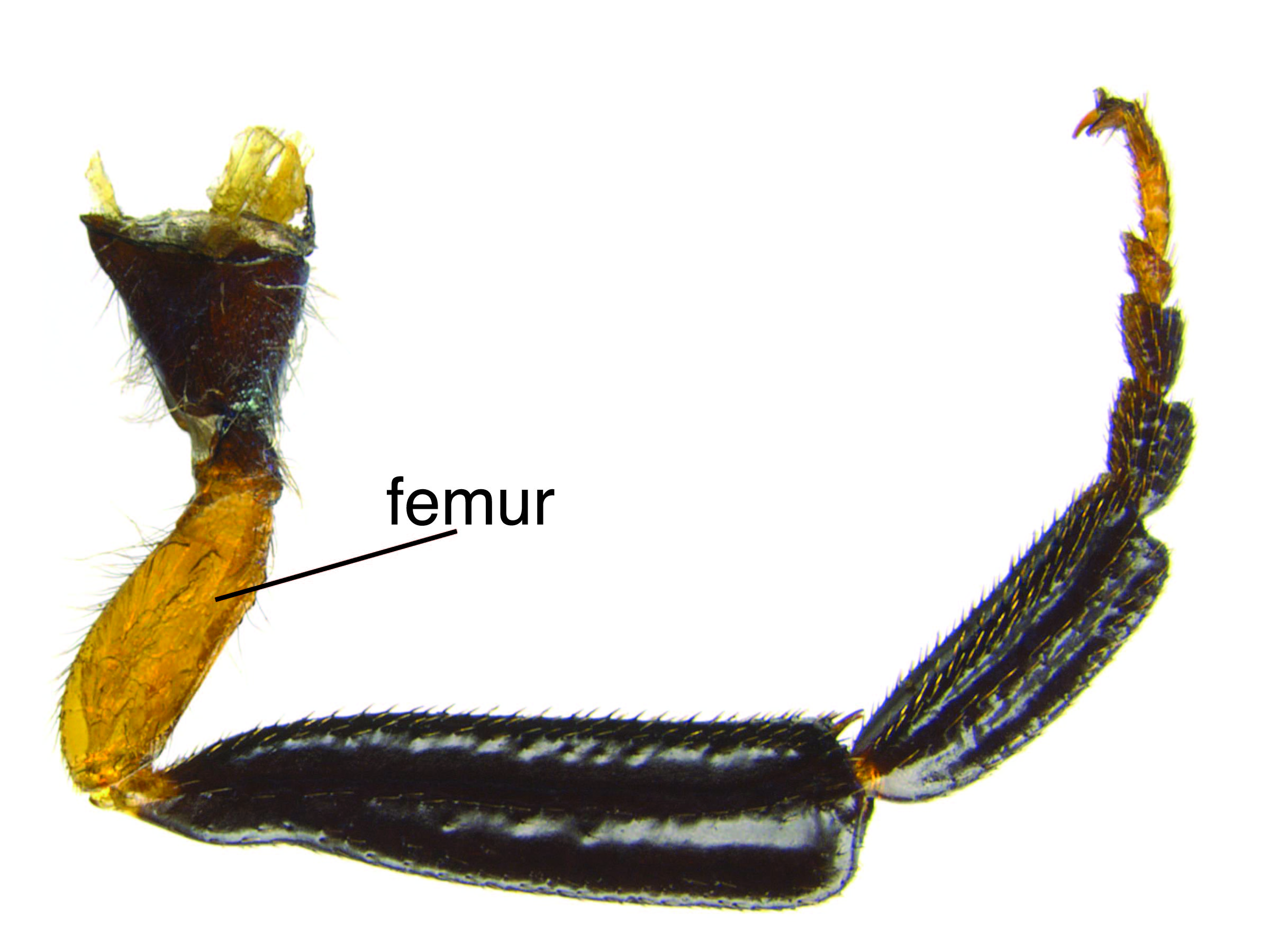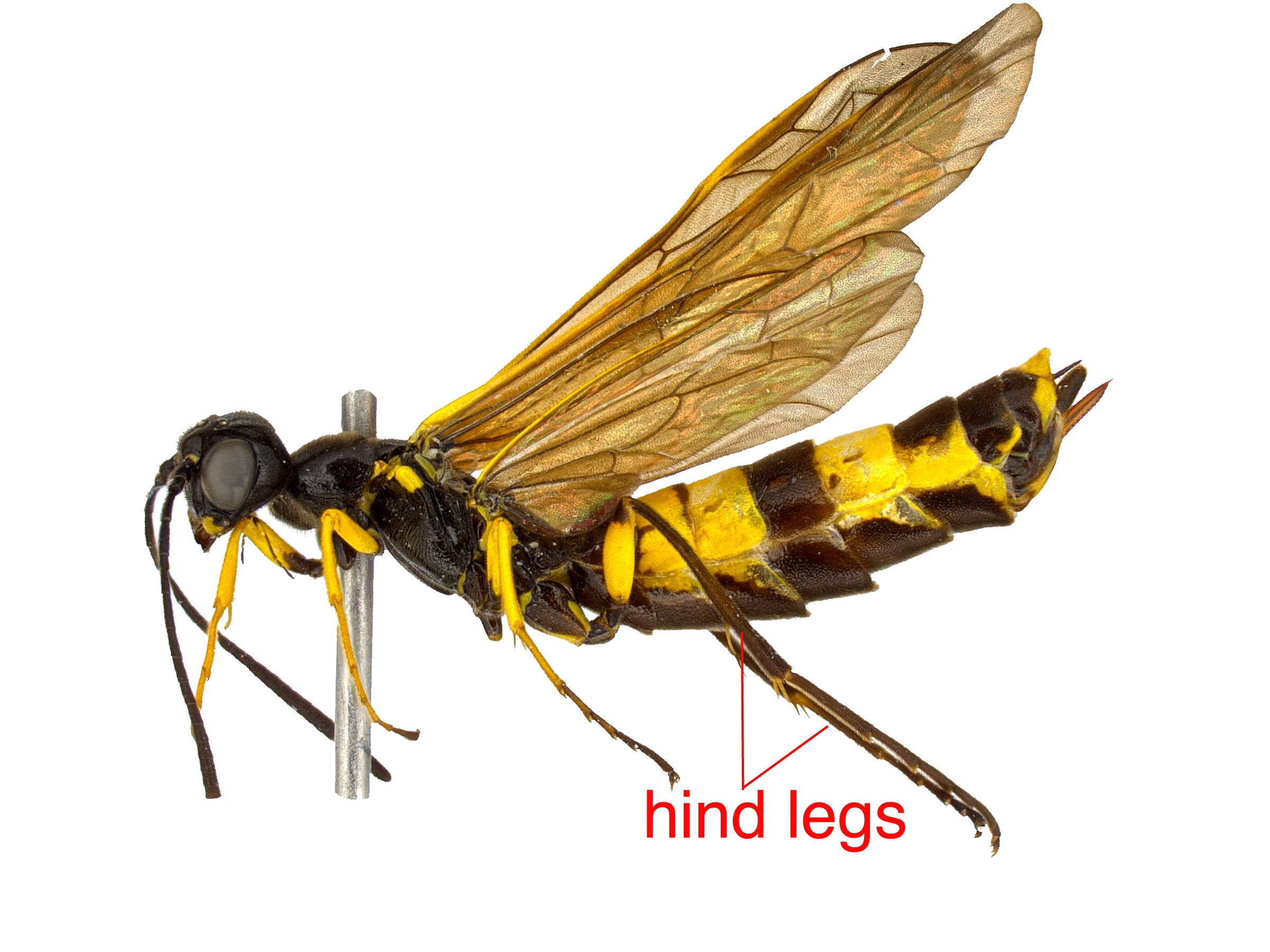Family: Siricidae
Subfamily: Siricinae
Genus: Sirex Linnaeus, 1760
Species: Sirex sinicus Maa, 1949
Common names: none
Sirex sinicus is a rare black species from China (Smith 1978Smith 1978:
Smith DR. 1978. Suborder Symphyta (Xyelidae, Parachexyelidae, Parapamphiliidae, Xyelydidae, Karatavitidae, Gigasiricidae, Sepulcidae, Pseudosiricidae, Anaxyelidae, Siricidae, Xiphydriidae, Paroryssidae, Xyelotomidae, Blasticotomidae, Pergidae). Hymenopterorum Catalogus 14: 1-193.).
Because the description of this species is from a single specimen, it is not clear whether S. sinicus is a valid species or if it is a subspecies or morph of a species in the same range (see S. nitobei and S. juvencus). More collections and analyses of Chinese Sirex are needed to resolve this group.
See Sirex for genus-level diagnostic characteristics.
Sirex sinicus was described from a single male.
Male:
 mainly reddish-brown (Maa 1949Maa 1949:
mainly reddish-brown (Maa 1949Maa 1949: , tibiaetibia:
, tibiaetibia: , and tarsitarsus:
, and tarsitarsus: reddish-brown (Maa 1949Maa 1949:
reddish-brown (Maa 1949Maa 1949: and hind tarsomeres 4–5 reddish-brown, remainder of hind leghind leg:
and hind tarsomeres 4–5 reddish-brown, remainder of hind leghind leg: black (Maa 1949Maa 1949:
black (Maa 1949Maa 1949:Male S. sinicus is similar in appearance to S. juvencus but can be distinguished by denser pits on the vertexvertex:
the dorsal portion of the head between the compound eyes, between the occiput and frons
. Sirex sinicus is also distinguished from S. nitobei by the darkened apicalapical:
towards the apex; farthest away from the body
segment of the abdomenabdomen:
the third and last segment of an insect's body; in sawflies this is usually made up of 11 segments (segments 9 and 10 often fused) (Maa 1949Maa 1949:
(Maa 1949Maa 1949:
Maa T. 1949. A synopsis of Asiatic Siricoidea with notes on certain exotic and fossil forms. Notes d#39;Entomologie Chinoise 13 (2): 11-189.).
none recorded
unknown
Female Sirex harbor symbiotic basidiomycete fungus in abdominal glands called mycangia. During oviposition, the site is inoculated with the fungus (Amylostereum spp.), which begins to decompose the surrounding wood. LarvaeLarva:
the immature stage of holometabolous insects
 feed on the fungus, and in the process bore galleries through the wood (Schiff et al. 2012Schiff et al. 2012:
feed on the fungus, and in the process bore galleries through the wood (Schiff et al. 2012Schiff et al. 2012:
Schiff NM, Goulet H, Smith DR, Boudreault C, Wilson AD, and Scheffler BE. 2012. Siricidae (Hymenoptera: Symphyta: Siricoidea) of the Western Hemisphere. Canadian Journal of Arthropod Identification 21: 1-305.).
Larvae are creamy white and grub-like in appearance with a dark head capsule. As with adults, larvaelarva:
the immature stage of holometabolous insects
 possess a short dorsaldorsal:
possess a short dorsaldorsal:
of or on the top surface of the body or structure
horn on the posterior end of the body. The larvaelarva:
the immature stage of holometabolous insects
 bore galleries into wood, feeding until pupation and subsequent emergence. Throughout this process, the larvaelarva:
bore galleries into wood, feeding until pupation and subsequent emergence. Throughout this process, the larvaelarva:
the immature stage of holometabolous insects
 use their horn to pack the tunnel behind them with sawdust. Emergence holes are perfectly circular. The fungal symbiont is carried in specialized organs in female larvaelarva:
use their horn to pack the tunnel behind them with sawdust. Emergence holes are perfectly circular. The fungal symbiont is carried in specialized organs in female larvaelarva:
the immature stage of holometabolous insects
 that develop into the mycangia after metamorphosis (Schiff et al. 2012Schiff et al. 2012:
that develop into the mycangia after metamorphosis (Schiff et al. 2012Schiff et al. 2012:
Schiff NM, Goulet H, Smith DR, Boudreault C, Wilson AD, and Scheffler BE. 2012. Siricidae (Hymenoptera: Symphyta: Siricoidea) of the Western Hemisphere. Canadian Journal of Arthropod Identification 21: 1-305.).
The specific biology of S. sinicus is unknown.
World: Sirex sinicus is recorded from Beijing in northern China (Maa 1949Maa 1949:
Maa T. 1949. A synopsis of Asiatic Siricoidea with notes on certain exotic and fossil forms. Notes d#39;Entomologie Chinoise 13 (2): 11-189.).
North America: not recorded
No specific locality data was available for mapping the range of this species at the time of publication.